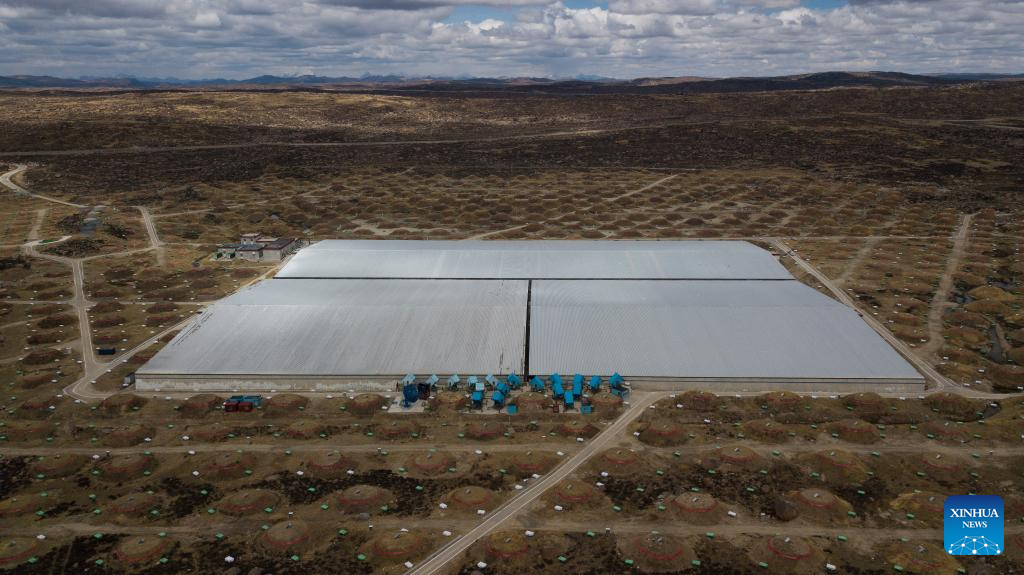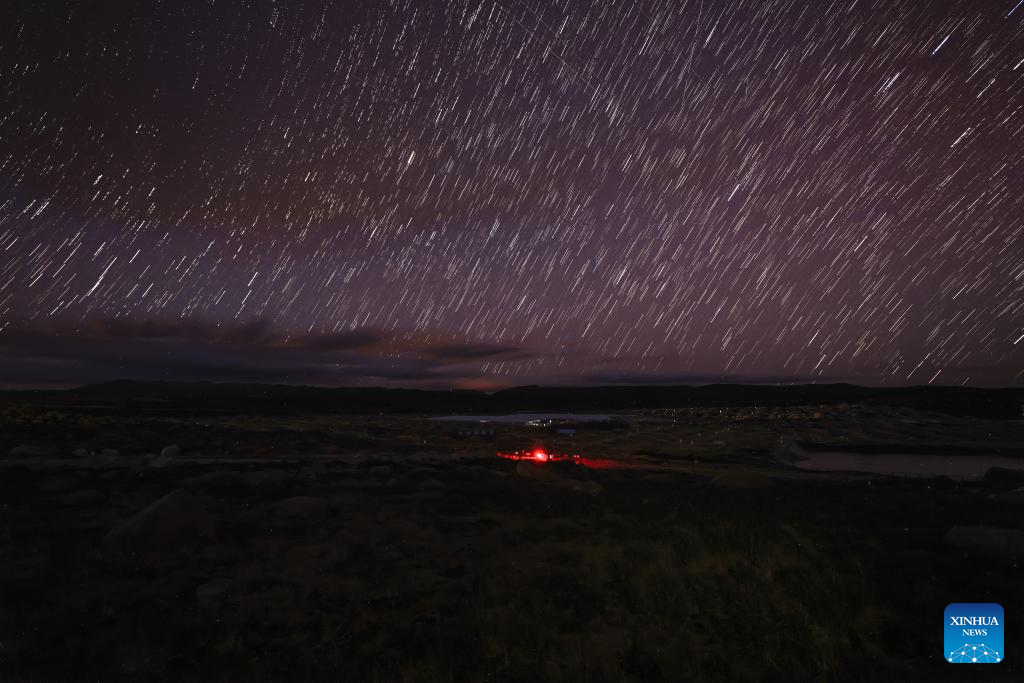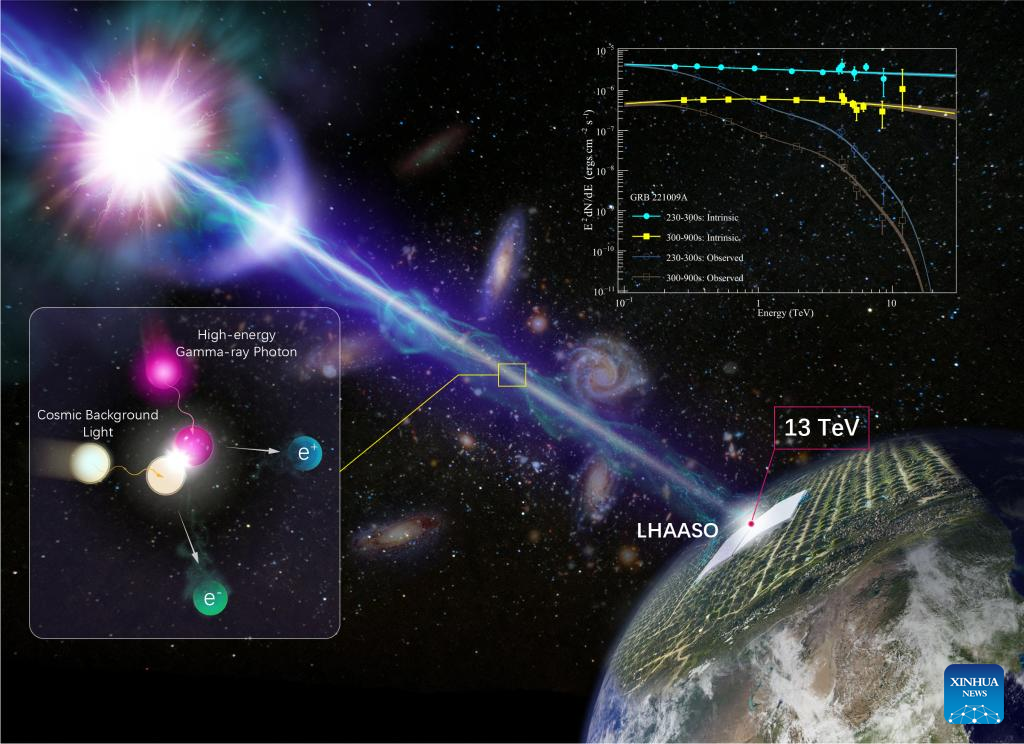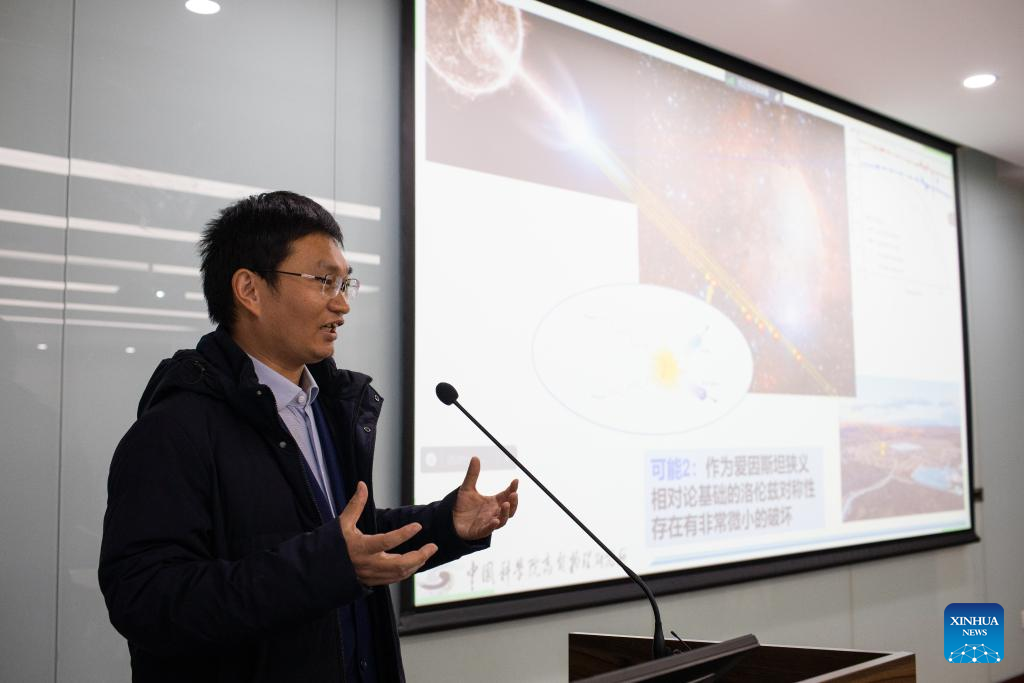Source:Xinhua 2023-11-18

This aerial photo taken on April 21, 2023 shows the Large High Altitude Air Shower Observatory (LHAASO) about 4,410 meters above sea level in southwest China's Sichuan Province. (Xinhua/Jin Liwang)
BEIJING, Nov. 16 (Xinhua) -- China's Large High Altitude Air Shower Observatory (LHAASO), a high-altitude cosmic ray observatory, has released the precise energy spectrum for the highest-energy gamma-ray radiation from the brightest gamma-ray burst (GRB) observed to date.
The study, conducted by the LHAASO collaboration team, was led by the Institute of High Energy Physics of the Chinese Academy of Sciences, and the findings were published recently in the journal Science Advances.
GRBs are immensely energetic explosions that have been observed in distant galaxies. They are the most energetic and luminous electromagnetic events since the Big Bang.
The first GRB was discovered in 1967. Since 2019, three GRBs with high energy emissions have been detected and photons up to one TeV (one trillion electron volts) have been recorded.
In October last year, LHAASO recorded photons from GRB 221009A with energies exceeding 10 TeV, which was regarded as a milestone in the six-decade history of GRB research.
GRB 221009A is the brightest GRB ever observed and was found to be initiated by the collapse of a massive star, which is more than 20 times heavier than the Sun when its nuclear fuel ran out.
According to the study, in the standard GRB model, afterglow radiation originates from the collision of explosion relics, traveling at nearly the speed of light, with the surrounding gas. This causes high-speed shock waves that accelerate electrons to very high energies. These electrons then further scatter the surrounding photons to become high-energy gamma rays. Theoretically, the intensity of this radiation decreases rapidly as photon energy increases.
However, LHAASO did not observe such a rapid drop in photon flux even at energies up to 13 TeV. This poses a challenge to the GRB standard model and hints that photons around 10 TeV might be produced by more complex particle acceleration processes or new radiation mechanisms, the study said.
Moreover, the energy spectrum measured by LHAASO challenges the standard radiation model of GRB afterglows, revealing that the intensity of cosmic background light in the infrared band is lower than expected. This prompts a reevaluation of the formation and evolution of galaxies in the universe, according to the study.
Additionally, the new findings provide crucial information for examining Einstein's special relativity theory and new physics, such as exploring axions as candidate particles for dark matter.
Located on a mountain about 4,410 meters above sea level in southwest China's Sichuan Province and covering an area of 1.36 square kilometers, LHAASO is used to conduct cosmic ray observation and research. It is the most sensitive ultra-high-energy gamma-ray detection device in the world, with a large field of view and all-weather monitoring capability, covering two-thirds of the sky every day. ■

Chen Songzhan, the corresponding author of the study and a researcher at the Institute of High Energy Physics (IHEP) of the Chinese Academy of Sciences, introduces research findings at the IHEP of the Chinese Academy of Sciences in Beijing, capital of China, on Nov. 14, 2023. (Xinhua/Jin Liwang)

This composite photo taken on April 21, 2023 shows the Large High Altitude Air Shower Observatory (LHAASO) about 4,410 meters above sea level in southwest China's Sichuan Province. (Xinhua/Jin Liwang)

This diagram shows the energy spectrum for the highest-energy gamma-ray radiation from the brightest gamma-ray burst (GRB) observed to date released by China's Large High Altitude Air Shower Observatory (LHAASO). (Institute of High Energy Physics of the Chinese Academy of Sciences/Handout via Xinhua)

Chen Songzhan, the corresponding author of the study and a researcher at the Institute of High Energy Physics (IHEP) of the Chinese Academy of Sciences, introduces research findings at the IHEP of the Chinese Academy of Sciences in Beijing, capital of China, on Nov. 14, 2023. (Xinhua/Jin Liwang)
Copyright © Xizang Daily & China Xizang News All rights reserved
Reproduction in whole or in part without permissions prohibited
Index Code: 藏 ICP 备 05000021 号
Producer: Xizang Daily International Communication Center